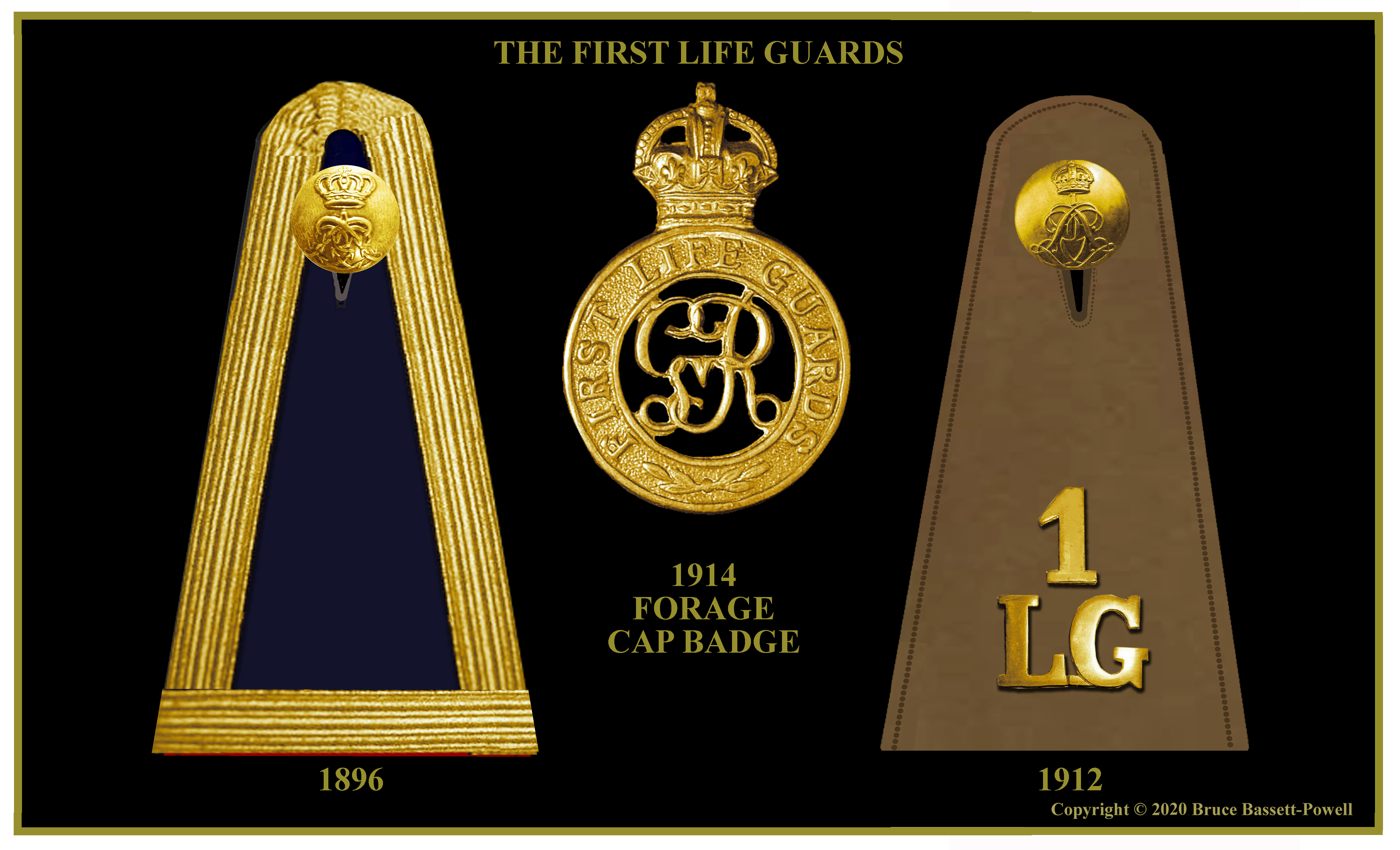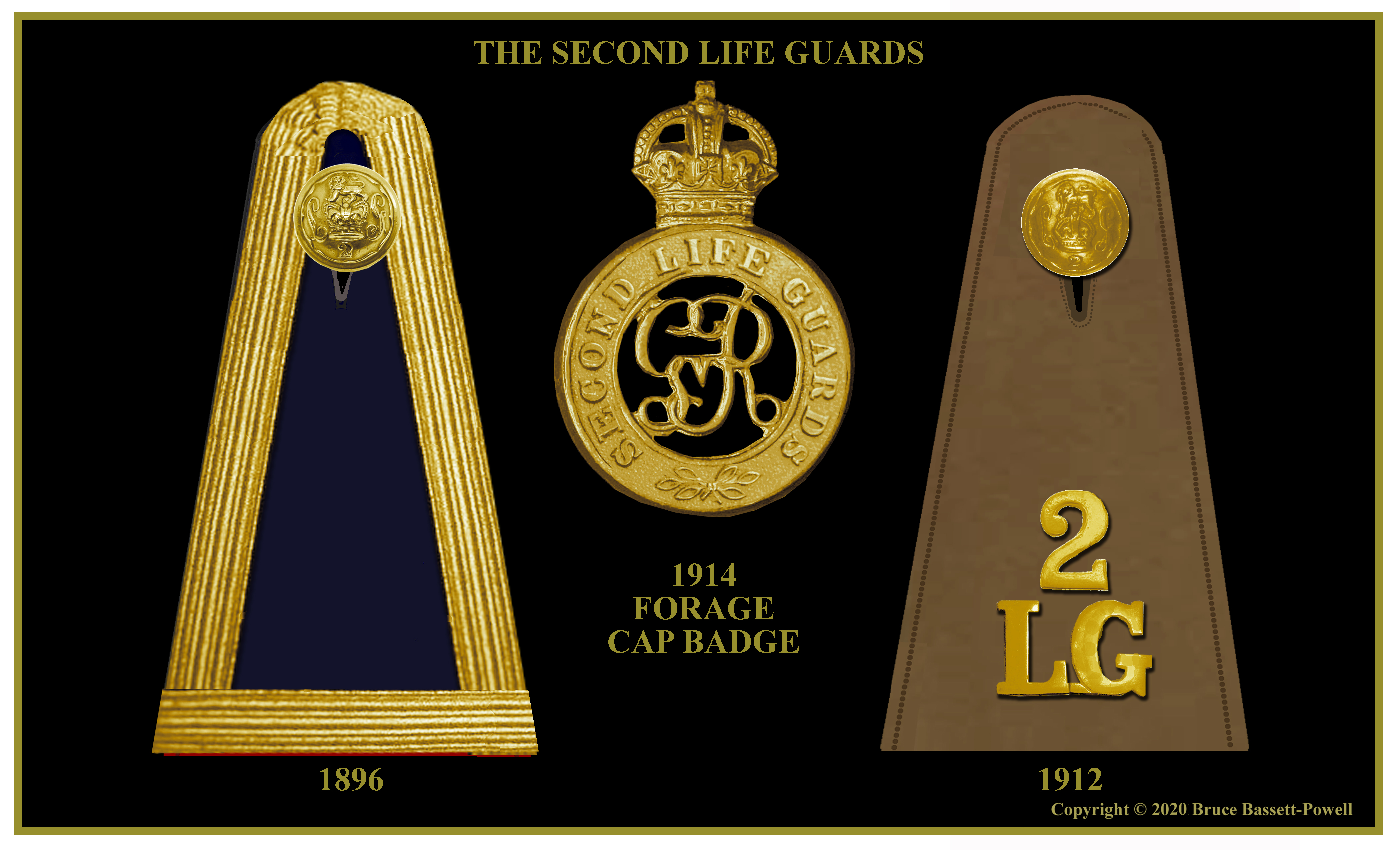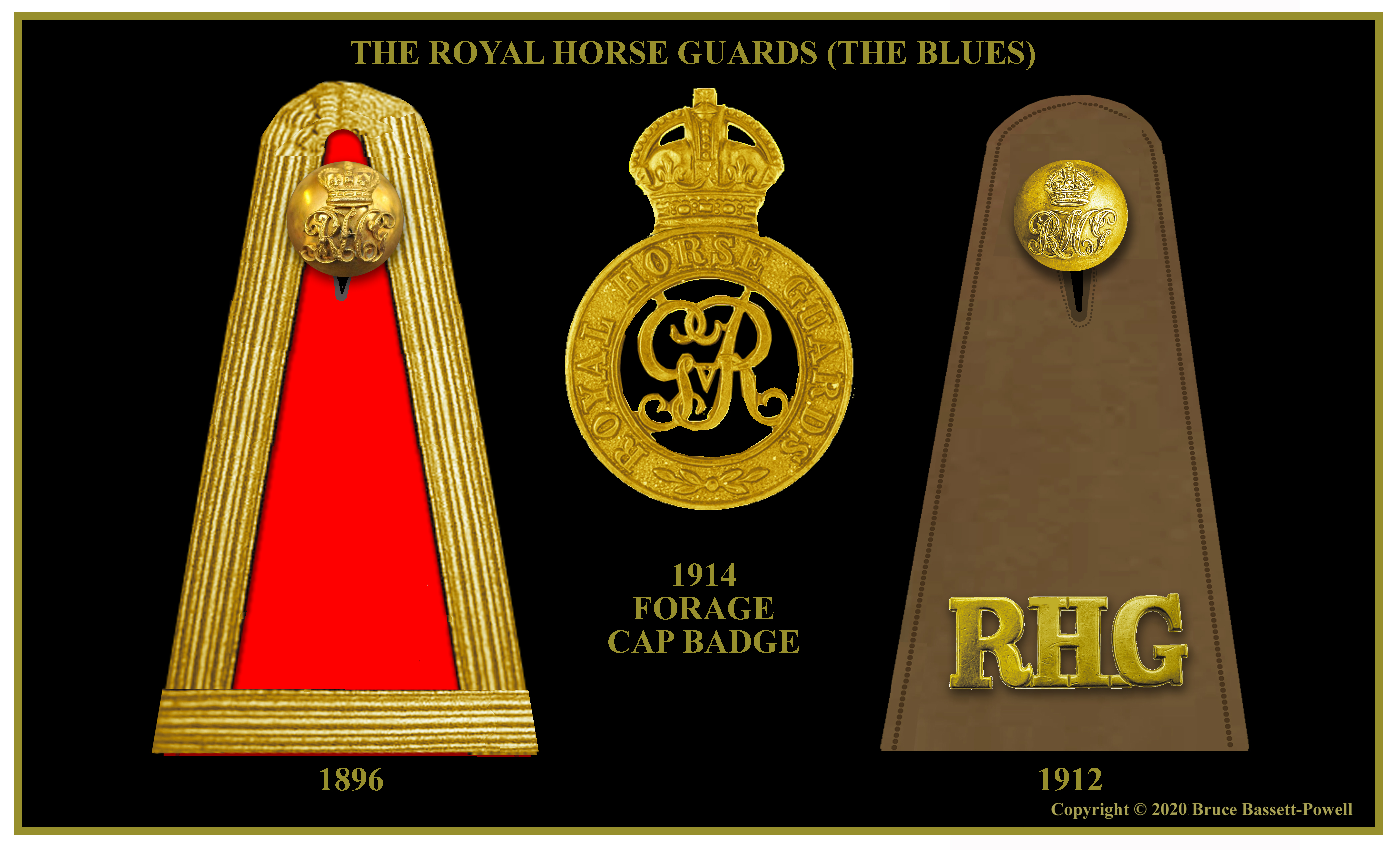THE HOUSEHOLD CAVALRY
COMING NEXT:
THE ROYAL ARTILLERY
THE ROYAL ENGINEERS
DEPARTMENTAL CORPS
& THE ROYAL MARINE ARTILLERY
-------------------------------------------------------------------
The Household Cavalry. During the span of time covered by this study the Household Cavalry comprised three regiments who acted as the mounted element of the bodyguard to the Sovereign. In terms of dress, unlike their dismounted counterparts who had abandoned numerical designation, they retained some usage of numerals for their insignia in addition to the devices of Royal association that had evolved since the three regiments' were raised. Just as with the Dragoon Guards and Dragoons of the cavalry of the line, these numerals occasionally appeared on some of the shoulder straps of undress upper garments and, for a short time field caps , but unlike the line they were not used on full dress, which instead relied upon just regimental lace and buttons as their means of identification. When tunics replaced the long standing coatees in 1855 the Household Cavalry continued to use the distinctive, regimental lace edged collar, cuff and shoulder strap as their mark of identity instead of the numerals and letters used by the cavalry of the line. There is plenty of evidence that the 1st & 2nd Life Guards in 1914 wore the shoulder title with the numeral "1" and "2" above LG. However, during the war and before amalgamation, they wore a plain "LG".
Unlike the line, by 1907 the Household Cavalry still retained the popular, short stable jacket, in addition to a frock , but in each case the shoulder straps were unadorned for Troopers apart from regimental buttons. The Household Cavalry's individual regiment's duties were very much aligned with the activities of the Royal Court, and the palace and barracks routines associated with it. The three regiment's usage of uniform reflected that, with just a composite Household Cavalry unit of combined squadrons serving on campaign in drab khaki service dress (SD). Although the rest of the Army and the Composite regiment were all familiar with khaki since 1902, it was not until the Summer manoeuvres of 1912 that all three regiments wore SD as individual, unified bodies, for the first time. SD cap badges were at last issued in 1913, less that a year before the regiments departed for France and Flanders. They were bronzed for SD and in gilding metal for those in home service clothing.
---------------------------------





